The national animal of the United Arab Emirates (UAE) is the Arabian oryx.
It is a species of antelope, native to the deserts and gravel plains of the Arabian Peninsula (Bahrain, Jordan, Iraq, Kuwait, Qatar, Oman, Saudi Arabia, the UAE, and Yemen).
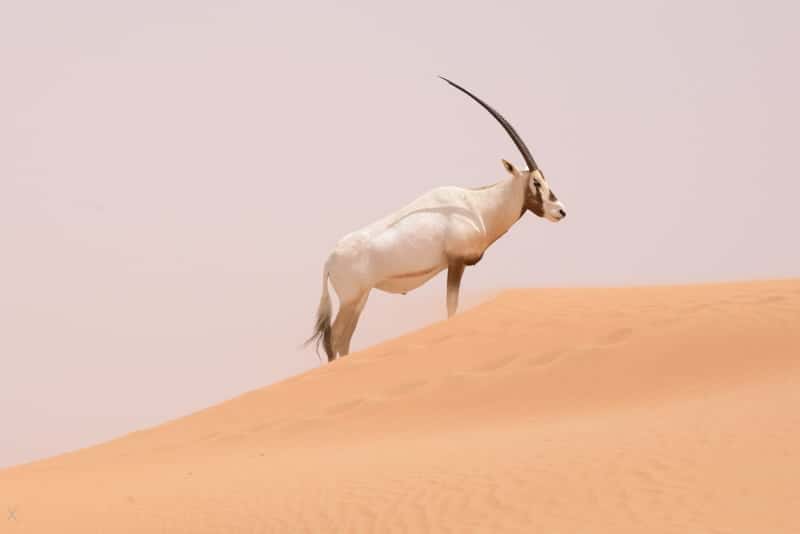
An adult Arabian oryx weighs around 70 kg and stands 1 m high. It has a white coat, brown legs and underside, and black stripes on the neck, nose, and forehead.
Both males and females have a pair of long horns. It is thought that the myth of the unicorn could be based on oryxes that have lost a horn.
Arabian Oryx are herbivores with a diet of mainly grasses. They can smell water from miles away and follow infrequent rains to eat new growths. They can survive for long periods without drinking water, getting moisture needed from plants.
Herds usually number 10 or less. Oryx are most active in the early morning and late evening. They use their hooves to dig depressions in the sand and lie in these to seek refuge from high daytime temperatures and desert winds.
By the start of the 1960s poaching and hunting had reduced the number of wild Arabian oryx to around 100. Roads built by oil companies had made their desert habitat easily accessible to hunting parties.
Conservationists decided that the best hope for the animal was to establish a captive breeding herd elsewhere. The Phoenix Zoo in Arizona was selected as the location for the breeding programme, primarily due to its hot desert climate. It was established in 1962 with three wild oryx from Yemen, one from London Zoo, and another five from private collections in Saudi Arabia and Kuwait.
By 1972, just after the formation of the UAE, there were no Arabian oryx left in the wild. However, the captive herd at Phoenix Zoo had grown to 35. Numbers increased further over the next few years and animals were sent to other zoos around the world.
In 1980 numbers in captivity had increased to a point where some could be released into the wild. They were placed in conservation areas where hunting was illegal. Since then the wild population has grown significantly.
In 2011 the Arabian oryx was reclassified from ‘endangered’ species to ‘vulnerable’ by the International Union for the Conservation of Nature (IUCN). It became first species of animal to revert to ‘vulnerable’ status after previously being extinct in the wild. The captive breeding programme is undoubtedly one of the greatest conservation success stories ever.
In the UAE, Arabian oryx are now found at locations such as:
- Abu Dhabi – Al Ain Zoo – Zoo open to the public.
- Abu Dhabi – Arabian Oryx Protected Area – Reserve not open to the general public.
- Dubai – Dubai Desert Conservation Reserve – Desert safaris possible with approved operators.
- Dubai – Wadi Al Safa Wildlife Centre – Not open to the general public.
- Sharjah – Breeding Centre for Endangered Arabian Wildlife – Not open to the general public.
- Sharjah – Arabian Wildlife Centre – Zoo open to the public.
Developments have not all been positive. In 2007, the Arabian Oryx Sanctuary in Oman was the first site to be removed from UNESCO’s World Heritage List. This move was a result of the Omani government’s decision to allow oil exploration on most of its area. Between 1996 and 2007, the numbers of Arabian oryx here fell from 450 to 65.
The Arabian oryx is also the national animal of several other countries in the Middle East; Bahrain, Jordan, Oman, and Qatar.
The national bird of the UAE is the falcon. The national tree is the ghaf.
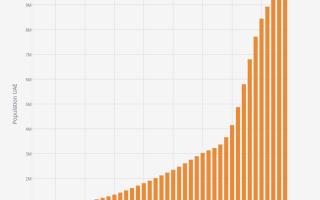
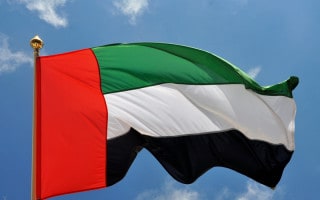
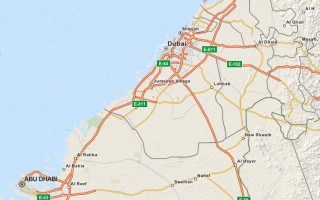
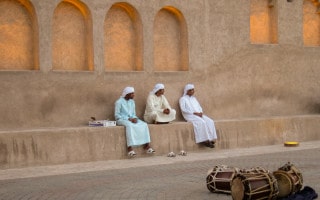
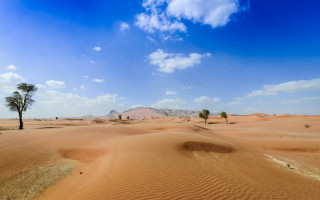
This is amazing information about the UAE National Things. UAE is pure Love.